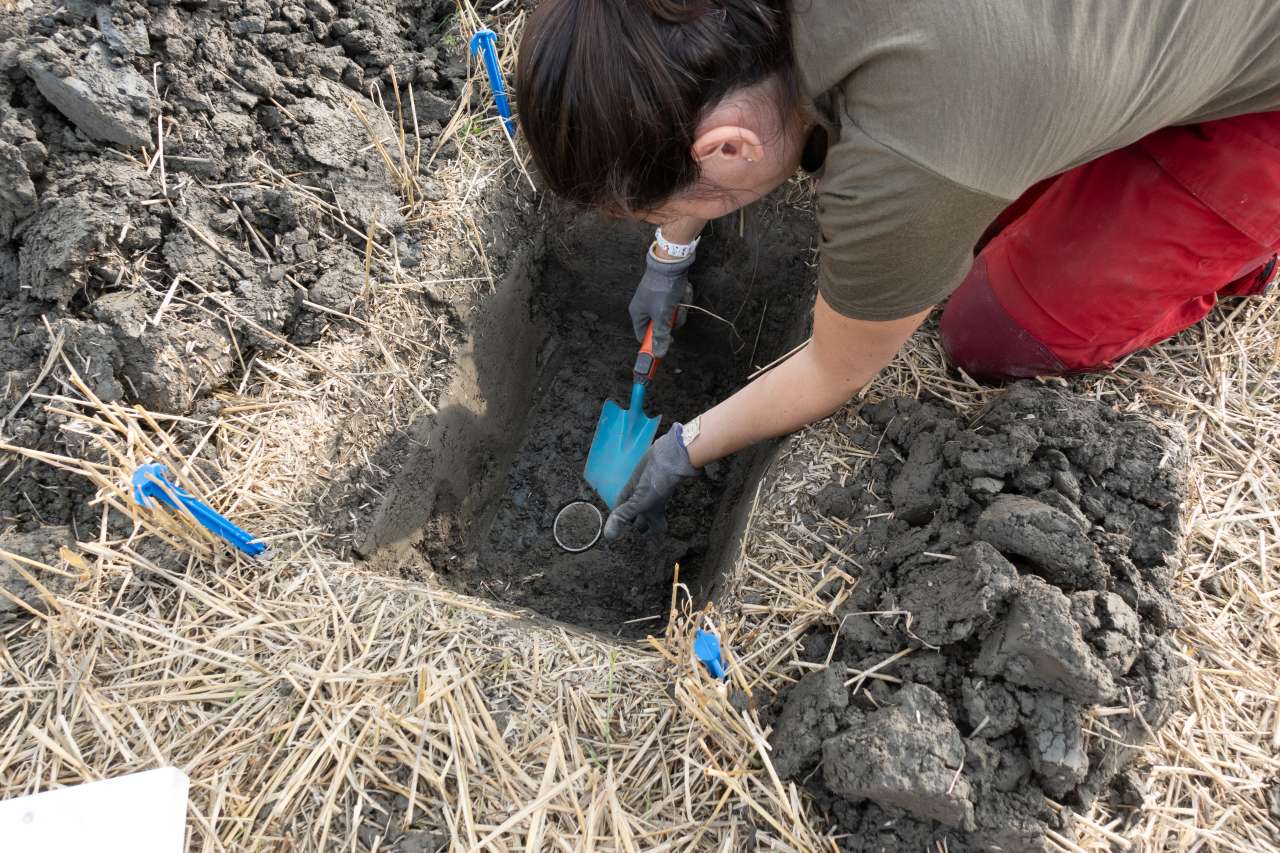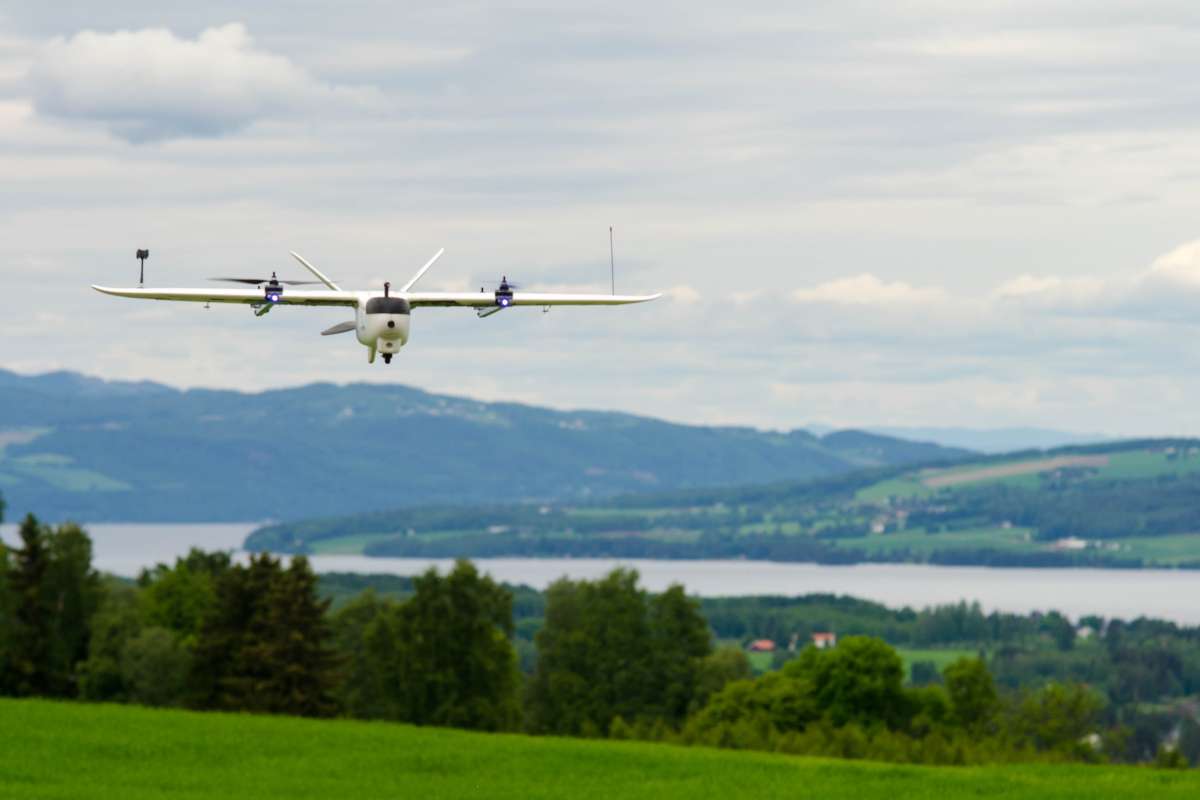Division of Survey and Statistics
JordVAAK – Implementation of the Norwegian Agricultural Soil Monitoring Programme

End: dec 2023
Start: jan 2023
In 2023, the Norwegian Agricultural Soil Monitoring Programme called JordVAAK, will be implemented. NIBIO will evaluate essential soil properties as indicators for the most important threats to Norwegian agricultural soil. By examining the state and change of soil properties, NIBIO will pave the way for sustainable soil management that provides the basis for our food production.
Project participants
Dorothee Kolberg Roar Lågbu Elling Mjaavatten Till Seehusen Robert Barneveld Marit Almvik Erik J. Joner Claire Coutris Anders Aas Shivesh Karan Anne B. Nilsen Jannes Stolte Ingvild Nystuen
| Start - end date | 01.01.2023 - 31.12.2023 |
| Project manager | Teresa Gómez de la Bárcena |
| Division | Division of Survey and Statistics |
| Department | Agricultural Soil Survey |
| Total budget | 4 mill. NOK |
| Budget this year | 4 mill. NOK |
| Funding source | The Climate and Environment Programme (KMP), The Norwegian Agriculture Agency |
Monitoring for the future of Norwegian agriculture
Through the Norwegian Agricultural Soil Monitoring Programme, JordVAAK, NIBIO will assess a range of indicators that describe the condition of the soil on agricultural land across the country. The programme will gather solid soil information that will enable the documentation of status and change, and thus ensure the necessary knowledge base required to face current and future challenges, and to work intentionally towards sustainable agronomy.
Several international soil threats have been defined by the EU project ENVASSO (Environmental Assessment of Soil for Monitoring). Five of these are deemed relevant main threats to Norwegian soils: erosion, loss of organic matter, loss of biodiversity, soil compaction and contamination. Norwegian agriculture is closely connected to the UN’s work towards reaching the Sustainable Development Goals of eradicating hunger, responsible consumption and production, climate mitigation and protecting life on land. JordVAAK distinguishes between natural and agricultural management-related conditions that relate to the five main threats to Norwegian soils. The programme will increase knowledge about the state and change of soil properties and is thus essential in overcoming the challenges described by the UN and EU.
JordVAAK will provide Norwegian society and the agricultural sector a stronger foundation in the endeavour to build a more a sustainable and productive agricultural sector. Knowledge about the agricultural soil condition and how it changes will further contribute to the development of policies, measurement of achievements, national and international reporting and also to keep up with the climate agreements in the agricultural sector (i.e. increased soil organic carbon stocks in agricultural topsoils).
Implementation year
The implementation of JordVAAK is financed by the Norwegian Agricultural Agency as part of national climate and environmental measures, based on the agreement from the annual agricultural negotiations in 2022 (Prop. 120 S (2021–2022), ch. 7.4.2). NIBIO’s department of Agricultural Soil Survey is responsible for executing the implementation of the programme. JordVAAK has an associated Steering Committee with representatives from the Norwegian Agrarian Association (Norges Bondelag), the Norwegian Farmers and Smallholders Union (Norges Bonde- og Småbrukarlag), the Norwegian Agriculture Agency and the Norwegian Environment Agency, as well as representatives from NIBIO to ensure the involvement and commitment from stakeholders in the process. The Steering Committee will mainly focus on conveying the importance and goals of the programme towards the public and agricultural sector and facilitate the work towards the long-term economic framework. A project group has also been established, consisting of experts within different soil disciplines who will contribute to the development and choice of methodology, based on the original proposition (NIBIO report 7 (14), in Norwegian).
During 2023, targeted plans and comprehensive methodology will be developed for all steps in the implementation of the programme. Data collection will cover everything from acquisition of equipment to solutions for gathering data of agricultural operations from the landowners. Within data management and analysis, the importance of confidentiality, routines for reporting and technical solutions for dissemination will be also in focus. JordVAAK will prioritise both scientific and popular science dissemination, in addition to national and international reporting. The planning of the programme focuses strongly on cost-efficiency on a long-term perspective, both regarding technical systems and solutions and in terms of personnel.
Time for gathering knowledge
The initial plan is that the programme will comprise of a total of approximately 1000 randomly chosen locations that represent agricultural soil in Norway as defined by the National Land Resource Map (AR5). The indicators of the five main threats will be measured on different time-intervals, depending on the indicators’ expected changing rate, analysis requirements and costs. During the implementation year, a limited selection of locations will be visited for testing. The preparatory work will enable continued data gathering for future years but is dependent on long-term financing.
Norway is among the last European countries to establish a soil monitoring programme. Most EU-countries have either their own soil monitoring systems and/or are gathered in the European soil monitoring system, LUCAS Soil. JordVAAK will work in collaboration with LUCAS Soil with the aim to produce comparable soil data and include, in future, the Norwegian agricultural soil on the map in a European context. This work will be connected to the EU-programme EJP Soil through the soil harmonisation work package in this programme. JordVAAK’s ambition is to become a comprehensive and state-of-the-art monitoring programme that will place Norway in a position of international importance when it comes to soil monitoring.
NIBIO prioritises soil knowledge
NIBIO is the responsible institution in Norway for documenting soil properties and types via the national Agricultural Soil Survey programme. As of 2022, about 58 percent of the country’s cultivated soil has been mapped. The Soil Survey differs from JordVAAK in the sense that it describes and documents stable soil properties that are not expected to change with management to a great degree, based on evaluations done in-situ as a one-time survey. This includes classification and mapping of the properties and the distribution of various soil types. Results from the Soil Survey are used for making thematic maps useful for the farmers themselves, different sectors in public administration and politicians. The thematic maps provide objective sources of knowledge for evaluating agronomy, environmental consequences of agriculture, climate mitigation options and area management.
JordVAAK will include several soil indicators explored by laboratory analysis and on-site registrations that will be conducted on a large set of soil samples, from locations that will be revisited periodically for repeated soil sampling and registration. JordVAAK will register information about the agricultural practices and operations on each location to interpret the results in a nuanced manner. In addition to JordVAAK and the Soil Survey Programme, NIBIO is also initiating a monitoring programme for Soil Organic Carbon monitoring in forest and grassland soils.
Publications in the project
Authors
Teresa Gómez de la Bárcena Dorothee Kolberg Nora Hua Ly Kok Roar Lågbu Siri Svendgård-Stokke Geir-Harald Strand Anne B. Nilsen Shivesh Karan Anders Aas Marit Almvik Robert Barneveld Claire Coutris Erik J. Joner Till SeehusenAbstract
No abstract has been registered
Authors
Siri Svendgård-Stokke Dorothee Kolberg Rebecca J S Cannell Roar Lågbu Ove Mindor Klakegg Hege Ulfeng Åge Arild Nyborg Arne Bardalen Geir-Harald StrandAbstract
No abstract has been registered


